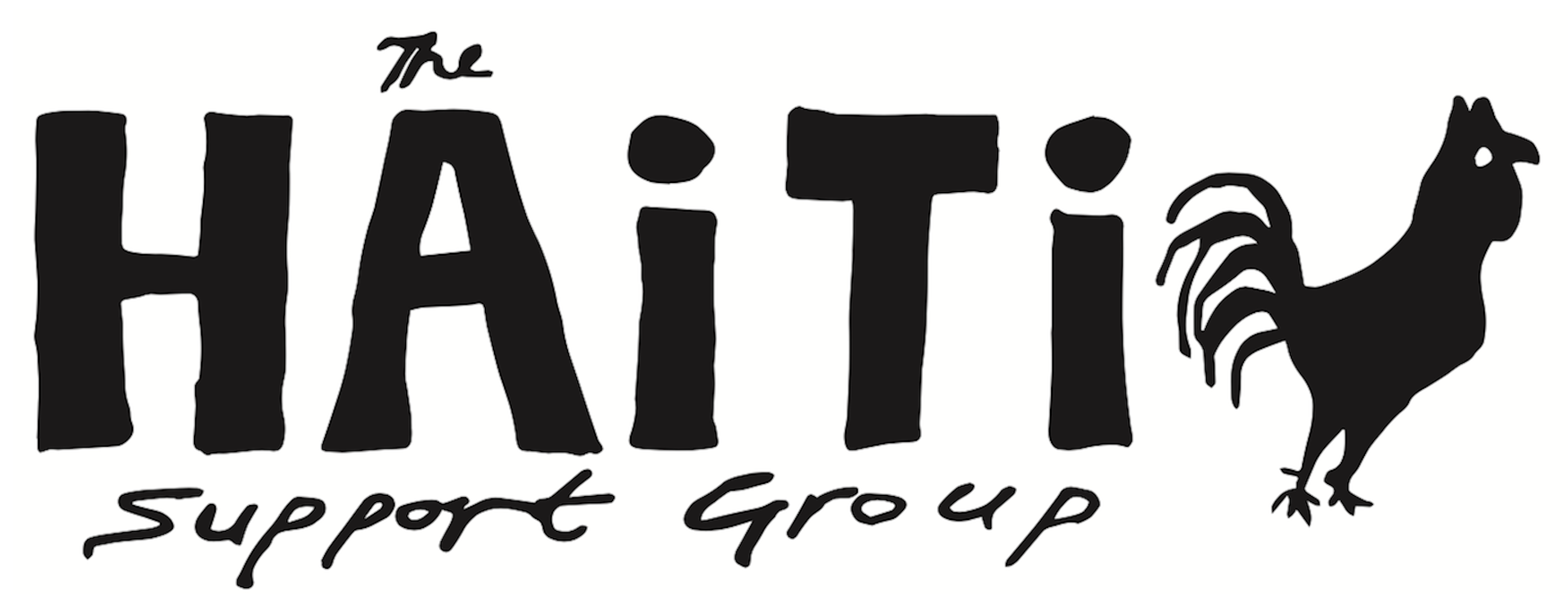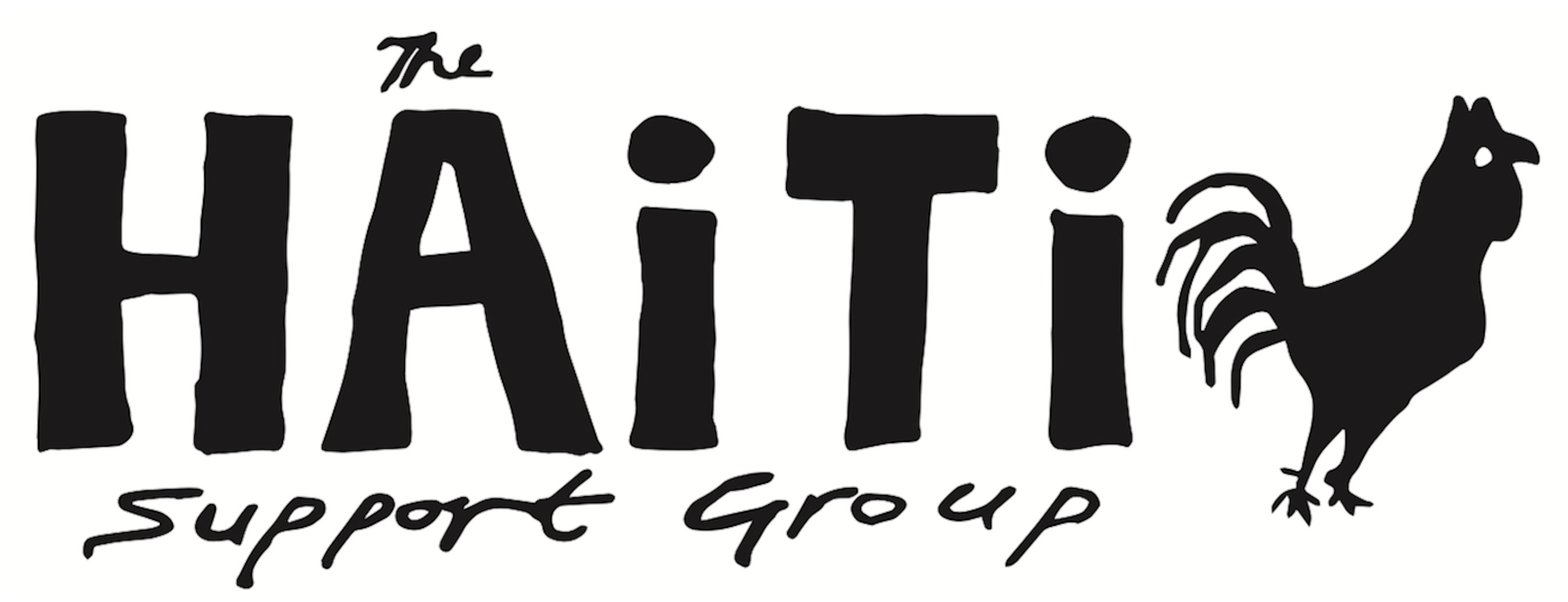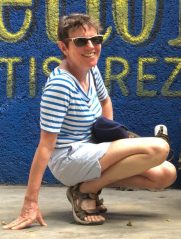Even though the plethora of creativity is considered something of a phenomenon, as well as producing some of the world’s best art, Haiti also churns out some of the worst. Stalls in front of Port-au-Prince’s central post office, and hotel foyers are flooded with bad and indifferent work. These rural scenes are mass-produced for the tourist market, and are on a par with kitsch souvenirs the world over.
History can supply some explanation for the rare talent that distinguishes Haiti from the rest of the region: the slaves’ revolt, which culminated in independence in 1804, isolated Haiti from the rest of the Caribbean, and also from an overpowering colonial cultural stranglehold. While the mulatto elite have always preferred to aspire to European cultural interests and style, the peasants have been unaffected by any such influences, and have retained their African spiritual vision.
The Vodou link
The major factor that contributes to the singular vision of Haiti’s artists is their inextricable link with Vodou in everyday life. Before Haitian art was ‘discovered’ the artisans served the lwa (Vodou spirits) and the hougans (Vodou priests) with their talents. Their painted murals decorated the walls of the houmfors (temples), and the elaborate sequin flags were used in the ceremonies to summon the lwa.
“It is the special circumstance – the existence of a limitless source of spiritual inspiration….which has made the art of Haiti so effective and important,” wrote Sheldon Williams in his book ‘Voodoo and the Art of Haiti’.
The concept of marketing this creativity as art was of course imported from the ‘West’. An American schoolteacher, De Witt Peters, can to a certain extent take the honour of having discovered the wellspring of creativity in Haiti. Until his arrival in 1953 some of Haiti’s potentially great artists were blacksmiths or decorators, occasionally constructing metalwork crosses for the cemeteries or painting the spirit gods on the doors of local shops. (Visual art is an important aspect enhancing everyday life and death and respecting the spirits.) Peters was working as a teacher in Port-au-Prince, but was also trained in the arts. He recognised the extraordinary flavour of the primitivist, and helped the artists to develop their skills by setting up the Centre D’Art.
Hector Hyppolite, considered Haiti’s greatest painter, was discovered by Peters, when he and a friend spotted some paintings on a cafe door while passing through the town of St. Marc. Above the door was a prophetic sign which read ‘Ici La Renaissance’. Finding the artist, they invited him to join them at the Centre D’Art, and soon Hyppolite was producing his intense and strange works on canvas.
Hyppolite was a hougan, and his works were inspired by his rich dreams and visions. He never lost his allegiance to Vodou during his years of success.
Truman Capote wrote, “because he is the most popular of Haiti’s primitive painters, Hyppolite could afford a running-water house, real beds, electricity; as it is, he lives by lamp, by candle in the Trou de Cochon slum, and all the neighbours, old withered coconut-headed ladies and handsome sailor boys and hunched sandal makers, can see into his affairs as he can see into theirs….this is the reason that I find Hyppolite admirable, for there is nothing in his art that has been slyly transposed, he is using what lives within himself, and that is his country’s spiritual history, it’s singing and worships. See Hector Hyppolite mini-biog.
Oil drum sculpture
Another artist (and soon after, a new art form) discovered by De Witt Peters was Georges Liautaud. Whilst driving through Croix-des-Bouquets, he was intrigued by strangely fashioned iron crosses protruding from many of the raised tombs in the town cemetery. The author of these works was a local blacksmith, and in Georges Liautaud’s small forge Peters persuaded him to try his hand at a free standing cross with a figure bound to it. Once he was free of utilitarian boundaries, Liautaud’s imagination and work flourished.
Croix-des-Bouquets, one of the recognised centres for most Haitian religious practices (Vodou ginen), magic (Vodou makanda) and secret societies (sandwel, zobop, bizango, vlingblingding), is now the heart of the Haitian metalwork movement. The two master sculptors, Gabriel Bien-Aim� and Serge Jolimeau, were trained by Georges Liautaud, and now their various apprentices are producing new works all forged from recycled oil drums.
The writing’s on the wall
One aspect of art in Haiti which cannot be marketed is the tradition of painting murals with a political content. Most of these appear overnight, and the artists remain anonymous.The departure of Baby Doc in 1986 inspired a profusion of murals depicting the joys of losing the yoke of dictatorship, and hopes for a new social structure. The mural tradition continued during Aristide’s campaign and election, many depicting the rooster (the symbol for Aristide) defeating the guinea fowl (the symbol for Duvalier). During the coup years most of these murals were lost, crudely daubed over with grey paint by the military, but recently new ones have appeared. Some depicting a hand putting an egg back inside a chicken are a direct reference to a comment by a pro-coup parliamentarian who said “There is as much chance of Aristide returning as there is of an egg going back into a chicken”.
Any discussion on Haitian art must open up the debate on Naive art, and the effect that Western commercialism has had on it. As Tom Wolfe wrote in ‘The Kandy-Kolored Tangerine Flake Streamlined Baby’,
“… those poor bastards in Haiti, the artists, who got too much, too soon, from Selden Rodman and the other folk-doters on the subject of primitive genius, so they’re all down there at this moment carving African masks out of mahogany – and what I mean is, they never had an African mask in Haiti before Selden Rodman got there.”
However careful exponents of Haitian art, such as Peters and Rodman, have tried to be, it is a story certainly not lacking in exploitation. In the 1970s the vortex of creativity shifted to Soissons la Montagne where the Saint Soleil artists commune was set up by the Haitian intellectuals, Tiga Garoute and Maude Robart. The artists were all peasants, and their paintings, in fitting with tradition, depicted the lwa. These representations were not in costume or in a Catholic likeness, but were depicted as form and energy. This was the avant-garde of Haitian art. The group included Prosper Pierre Louis, Louisianne St. Fleurant, the mother of Stevenson and Ramphis Magloire, and Levoy Exil.
Garoute and Robart wanted the artists to avoid the increasing commercialism of Haitian art, and proclaimed that “true artists do not paint for money”. Whilst Garoute was espousing his theory that artists would be contaminated by receiving just one penny of profit, he was receiving high prices for Saint Soleil works on the international market. The commune broke up when the ‘Cinq Soleils”, as they were then called, discovered that their paintings were selling abroad for very large sums of money, yet they were getting nothing. They were exploited for the very ‘naivety’ that made them popular. They moved out, sold to the highest bidder, and let the art critics decide whether or not their souls had been tainted by making a decent living.
Recovering from the coup
During the coup years, life was hard for Haitian artists. Tourism fell to an all time low, seriously damaging the artists’ livelihoods, and, due to the embargo, materials became scarce. This affected the metal workers of Croix-des-Bouquets dramatically as the oil embargo reduced the import of oil drums to nil. Some began to experiment with sheet metal, and Bien-Aimé began incorporating other bits of scrap metal in his work – car parts and wheel hubs. Sequins also became very rare, and in desperation some flag artists began using much larger sequins in order to cover ground faster. The flags produced were unattractive, but are considered a rarity as they are a product of those three hard years.
Now, since Aristide’s return, life has certainly improved for the artists. Materials are more readily available, and the market is picking up again due to an increase in foreign visitors. Whether the artists continue to be exploited for their ‘naivety’, or begin to take their production and distribution into their own hands, relates to a wider question – when will Haitian working people as a whole, gain control over their own economic future?
Bibliography:
- Where Art is Joy – Selden Rodman – Ruggles de Latour
- Voodoo and the Art of Haiti – Sheldon Williams – Morland Lee
- Spirits of the Night : The Vaudun Gods of Haiti – Selden Rodman & Carol Cleaver – Spring Publications
- Sequin Artists of Haiti – Tina Girouard – Contemporary Arts Centre New Orleans
- Forgerons Du Vodou: Voodoo Blacksmiths – Alain Foubert – Deschamps/Ulys Edition


